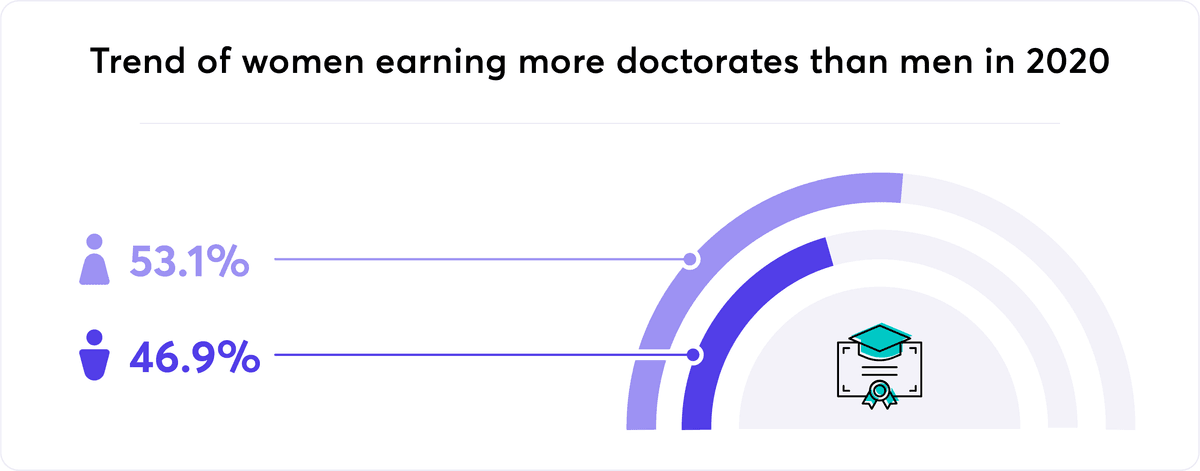Business News Daily provides resources, advice and product reviews to drive business growth. Our mission is to equip business owners with the knowledge and confidence to make informed decisions. As part of that, we recommend products and services for their success.
We collaborate with business-to-business vendors, connecting them with potential buyers. In some cases, we earn commissions when sales are made through our referrals. These financial relationships support our content but do not dictate our recommendations. Our editorial team independently evaluates products based on thousands of hours of research. We are committed to providing trustworthy advice for businesses. Learn more about our full process and see who our partners are here.
Key Steps Women Can Take to Be Strong Leaders
Female leaders are slowly but surely closing the gender gap. Follow these tips to carve out your path.

Table of Contents
In the past, many women have struggled to find acceptance in the workplace because of societal expectations and stereotypes. However, women have made enormous strides in several formerly male-dominated industries and are excelling in leadership roles.
While gender equality has made notable strides, female entrepreneurs still face challenges, and women in leadership roles often encounter more scrutiny, and are judged more harshly, than their male counterparts. In fact, women leaders often say they must work twice as hard to earn the same respect as men.
If these challenges sound familiar to you, read on for tips to help you prove your leadership merit in the workplace while inspiring other women to follow in your footsteps.
Why women leaders should leave their comfort zones
A commonly cited Hewlett-Packard study on internal hiring practices found that men often apply for a job when they meet 60% of the qualifications, but women apply only if they meet 100% of them. This finding implies that women subconsciously believe that if they don’t meet the job criteria exactly, they’re not suitable for the position and they won’t be considered. Because of this self-doubt, they don’t throw their hat into the ring.
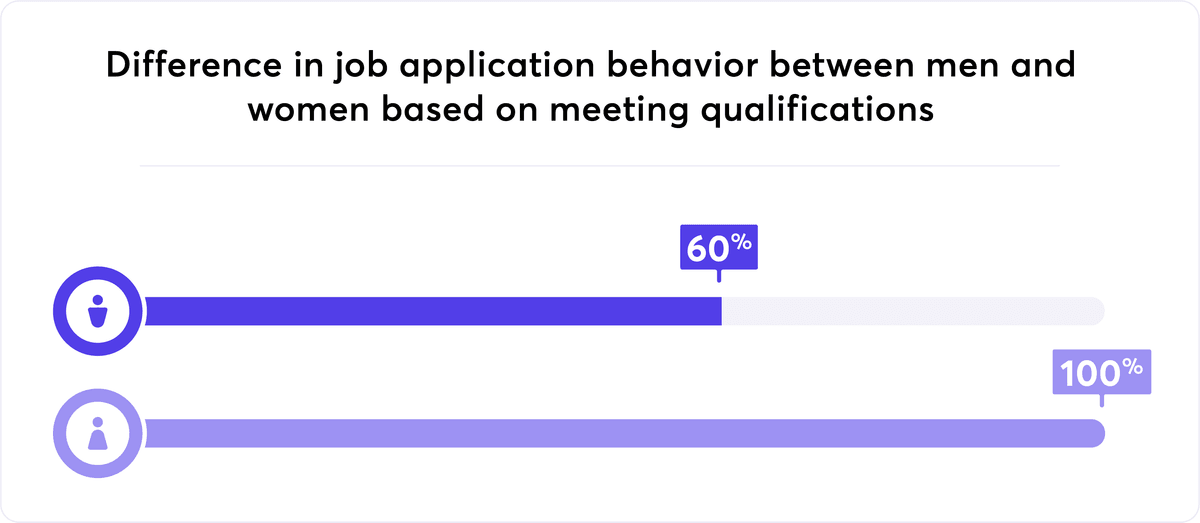
Changing this belief takes conscious effort. If a position resonates with their capabilities and experience, women should focus on the mindset that they’re entirely capable of doing the work and then prove their merit during the interview process. [Need an interview refresher? Check out our complete guide to a successful job interview.]
Here’s what some experts have to say about the importance of women aiming high:
- Women are socialized to be perfect. Reshma Saujani, founder and CEO of Girls Who Code, said that while girls are taught to play it safe, smile pretty and get all A’s, boys are taught to play rough and swing high. “In other words, we’re raising our girls to be perfect, and we’re raising our boys to be brave,” she said in a TED talk. Even when women are ambitious, the socialization of perfection often leads them to risk aversion, Saujani said.
- Recognize the fear, and do the hard thing anyway. Devoreaux Walton, owner of Distinct Personal Branding, believes success is found outside our comfort zone but is often hindered by the fear of the unknown. “Every successful entrepreneur and business leader did what they were afraid to do instead of just letting the fear rule in their personal and professional lives,” she said. According to Walton, the best way to overcome fear is to acknowledge that the fear is there but to do the thing that scares you anyway. If you’re too rigid, you could miss one of those serendipitous “aha” moments that could inspire a creative solution or force a different approach.
- Don’t miss out on opportunities that come your way. Angie Hicks, co-founder and chief marketing officer of Angi (formerly Angie’s List), had to face her fears when she was approached about starting the now-national customer review service as an introverted college graduate. “My biggest challenge was combating the fact that I was really shy and quiet,” Hicks said at the inaugural American Express OPEN CEO BootCamp. “In starting a business, you have to get out and talk to people. I was doing door-to-door [subscription] sales, which was the last thing I ever thought I would do.” Leaving her comfort levels paved the way for Hicks to take advantage of opportunities that never would have arisen otherwise. “Don’t miss out on opportunities that come your way,” she said. “Put yourself in a position to have those opportunities; know when one is facing you, and take it.”
Fight for a mindset of equality as reality
A study conducted by the Pew Research Center found that in 2020, women earned 84% of what men earned based on an analysis of the median hourly wage for both part-time and full-time work. Similarly, a 2020 U.S. Census Bureau study that analyzed full-time wage data found that women earned 83% of what men earned.
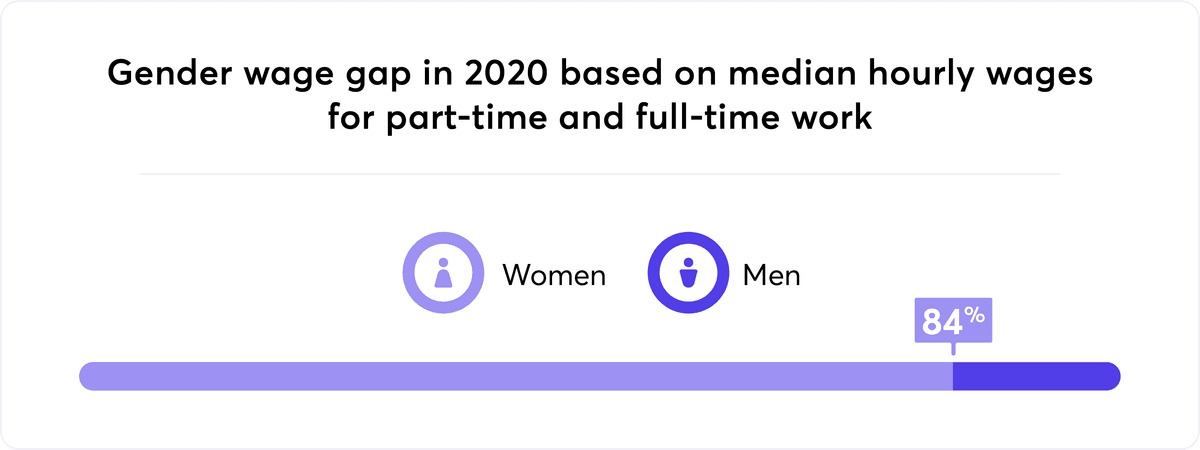
Many women have felt the effects of the gender gap during their careers, whether through a pay dispute, a lost promotion or snide comments from co-workers. Even if your work environment champions equality, it’s not uncommon to encounter people who have faced some kind of discrimination, subtle or not, because of their gender. [Make sure you know how to recognize and report workplace harassment if it does occur.]
Even though we’re faced with the reality of gender inequality on the news, on social media and through personal experience, one expert says women should remain steadfast and optimistic. Paula Stephenson, director of marketing at Smoke’s Poutinerie, says if women want to be viewed as equal in the workplace, they must stand their ground and demand the respect they deserve – and it starts by behaving as if the gap has been closed. “I have noticed that if you act like there’s equality in the workplace, then there will be,” Stephenson said.
That’s not to say people should pretend inequality doesn’t exist. Acknowledging the need for change is essential, but our actions and attitudes in the workplace are critical. Encourage yourself and others, and don’t let perceived detriments rule the day.
“Being a working mom in the corporate world is a daily challenge,” said Mayra Attuy, a marketing executive. Despite the struggle to find a positive work-life balance, she considers her proudest professional moment to be when she returned from maternity leave. She believes her simultaneous personal and career success has made her a stronger marketer.
Women should embrace their natural leadership styles
For women entering the workforce, Attuy recommended leading by example while being open, supportive and collaborative. Look for, bond with, and become a mentor and role model for other women. Advancements such as the #MeToo movement have ignited discussions, but there are still many barriers to overcome.
While every individual is different, attributes typically assigned to women can be significant differentiators as leadership qualities in the workplace. Women can help others set goals and attain them, emphasize teamwork, and invest time in training, mentoring and personal development.
Emily He, former chief marketing officer at Saba Software and now corporate vice president of business applications marketing at Microsoft, discovered that women are driven more by intrinsic motivations about work than by what their jobs or employers demand from them.
“In contrast to men, who tend to be career-centric and want to maximize their financial return from work, women view work more holistically, as a component of their overall life plan,” He said. “Therefore, they’re more likely to approach their careers in a self-reflective way and value factors such as meaning, purpose, connection with co-workers and work-life integration.”
Positive workplace culture shifts, including improved employee retention and better cooperation, can occur when women bring these intrinsic strengths to their teams and businesses. Most important, the next generation of leaders of all genders can move forward with enlightened perspectives.
As people work toward gender equality in their workplaces, the gender gap will close over time. Companies have a better chance of thriving when they incorporate various leadership styles, including what’s seen as traditionally feminine or masculine.
“The big challenge is to keep our perspectives top of mind in conversations at the corporate level, and also among family and friends, so the mindset shift can happen,” Attuy said. “Be resilient that change will come.”
Tip: Business leaders of all genders can help promote equality in the workplace. If you’re interested in bringing change, follow these tips to close the gender gap in the workplace and create an inclusive workplace culture.
Women in leadership statistics
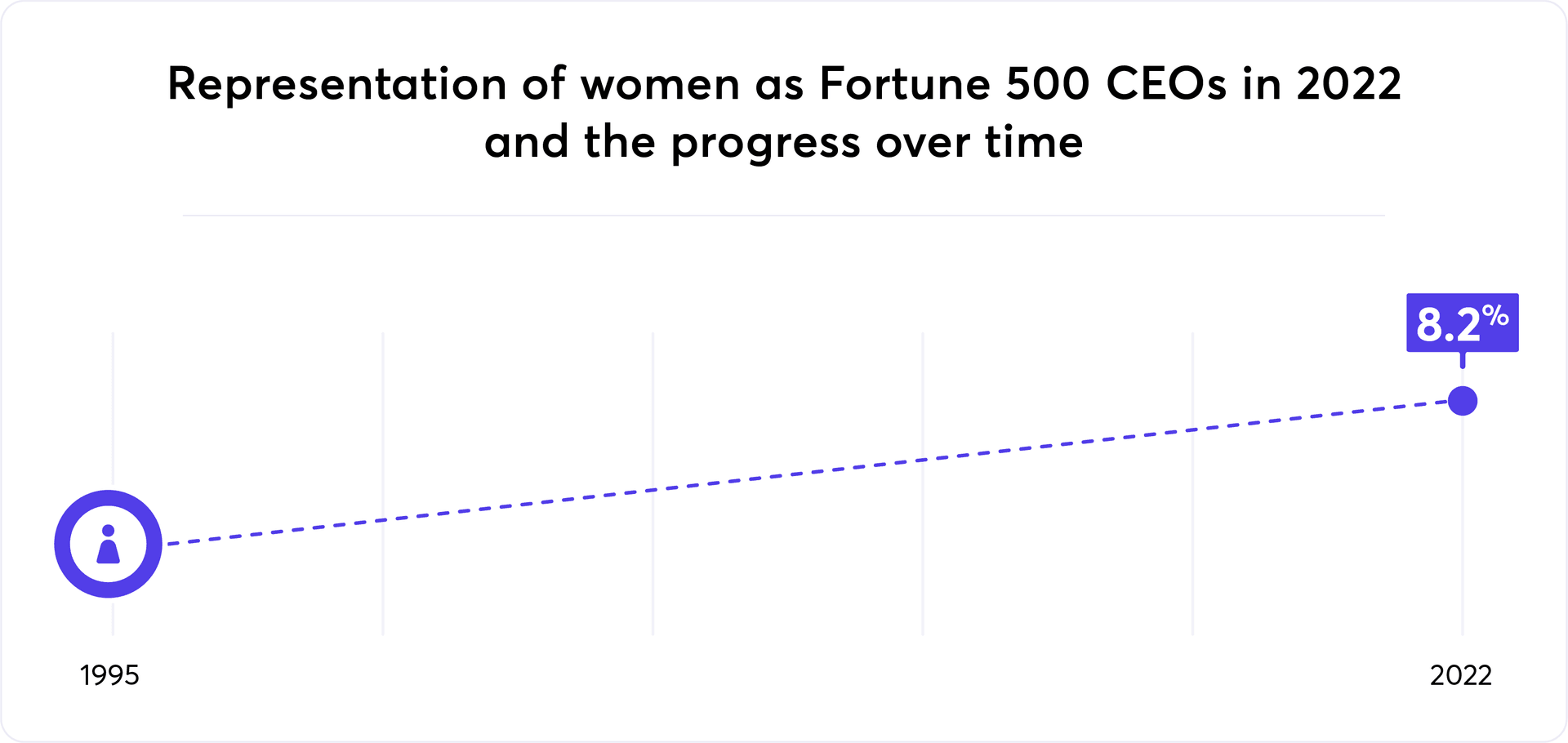
Despite small gains in recent years, statistics on women in leadership roles show that the gender gap remains. As of 2022, only 8.2% of Fortune 500 CEOs (41 CEOs) were women, although that’s a significant improvement from the zero female Fortune 500 CEOs in 1995, according to Zippia.
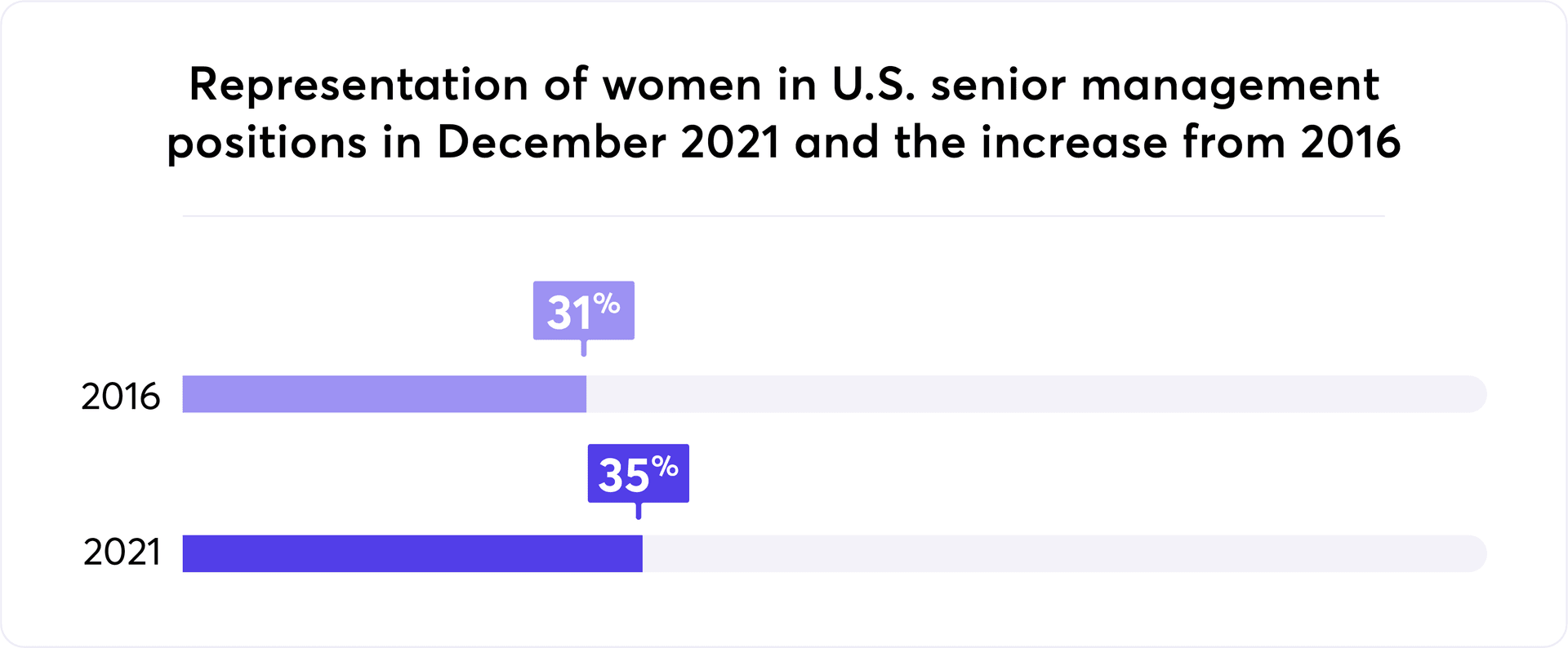
As of December 2021, women accounted for 35% of U.S. senior management positions in the United States – a 4% increase from 2016, but still far from 50%.
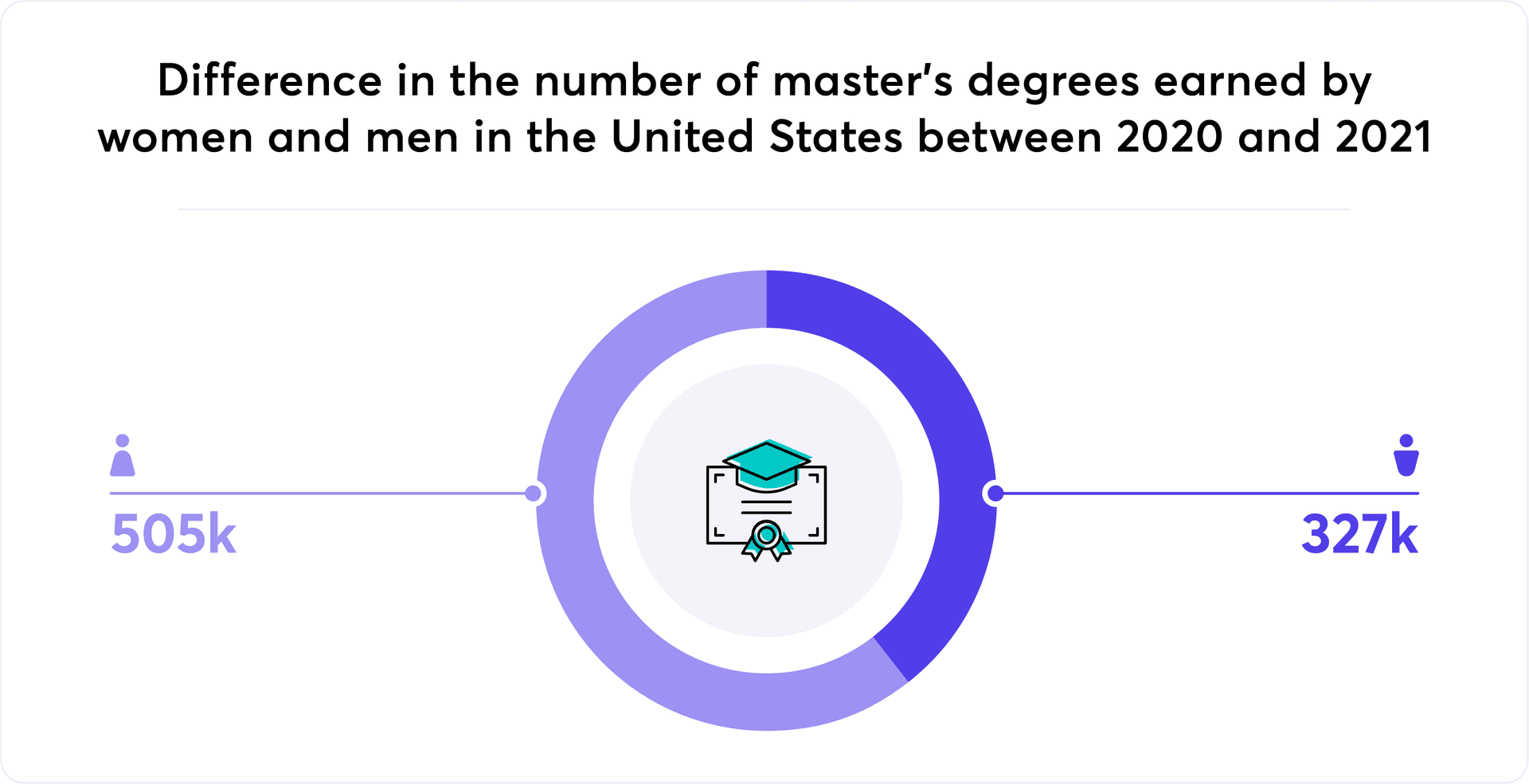
Educational statistics, too, point to a considerable gap. Between 2020 and 2021 in the United States, 505,000 women earned master’s degrees, compared with 327,000 men. Moreover, women with master’s degrees earned, on average, 38% less than men with the same qualifications – $72,568 for women, compared with $117,617 for men.
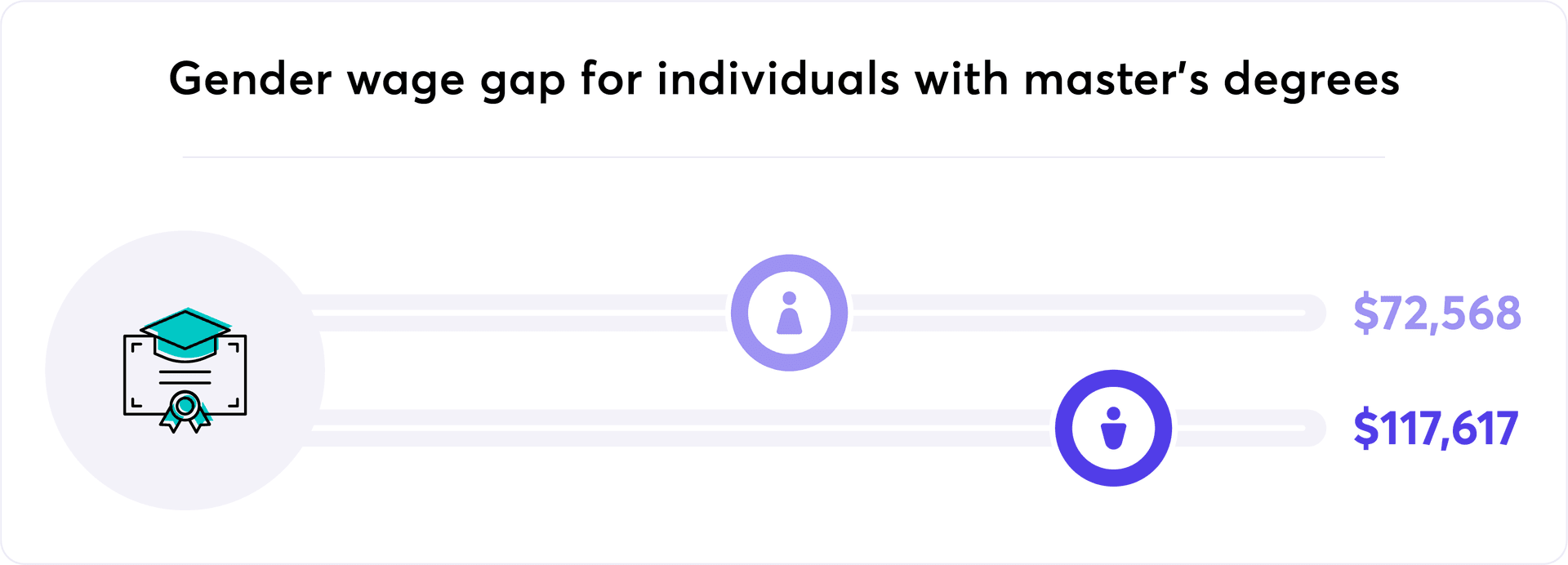
Barriers to women in leadership
Despite progress toward gender equality within the workplace, women still face pushback. Many barriers to women in leadership remain, including the following obstacles:
- Stereotypes. Most industries have been dominated by male leadership for so long that the traits of a good leader are often seen as masculine. Women are often perceived negatively when they exhibit these traits. To add insult to injury, women may be seen as unfit for the role when they do not demonstrate these typical leadership qualities. Additionally, some people may think of specific roles and industries as traditionally female and others as traditionally male.
- Discrimination. Work environments dominated by biases favoring men can be hostile toward women. Women may be passed over for promotions and experience sexual harassment, workplace harassment and other unprofessional behavior.
- Lack of networking opportunities. While bias is becoming less prevalent in the working world, its impact can still pose challenges for women looking to network. As a result, there may be fewer opportunities for mentorship or arrangements to help women move into leadership positions.
- No work-life balance. Old ideas about the domestic roles of men and women can limit the support women may need to balance work and everything else properly. As a result, some people may unfairly believe women can’t put in the time and effort required to lead. But every day, women continue to defy that myth – and plenty of others.
Carlyann Edwards, Isaiah Atkins and Nicole Fallon contributed to the writing and reporting in this article. Source interviews were conducted for a previous version of this article.

